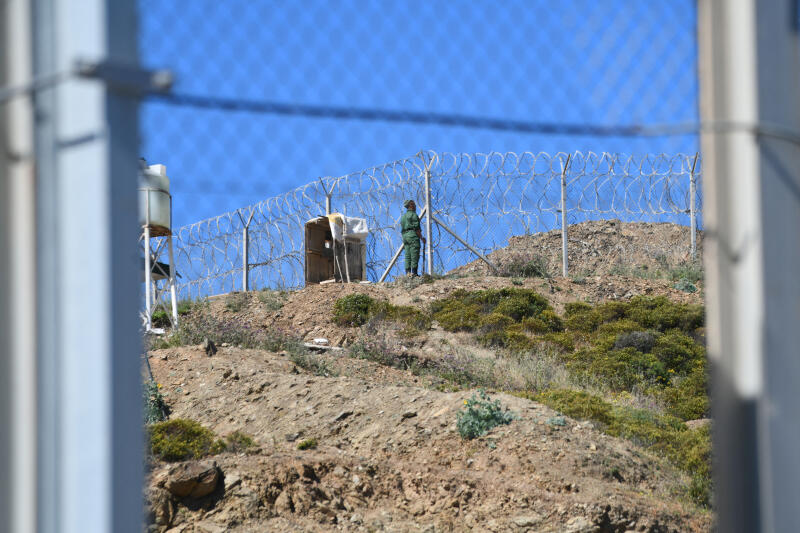This is the third time in less than a month that migrants have tried to cross the border, but to do so. Cooperation between Rabat and Madrid is cited as an example.
A thousand migrants from sub-Saharan Africa, according to the Moroccan press, attempted to cross the fence between Morocco and the Spanish enclave of Ceuta on the morning of Friday, November 17. Divided into several groups, they converged on three locations: north of the city, at the level of the Benzo district, to the south, near the beach of Tarajal, and further to the east, in the area of Finca Berrocal. Most were stopped in Moroccan territory by the security forces, but a hundred managed to approach the outer fence of Ceuta, some of which managed to escalate it without crossing it, according to the Spanish Guardia Civil.
Cited by Moroccan media, the prefecture of Fnideq reported numerous arrests among migrants. Some have “used excessive violence using knives”, according to the Moroccan authorities, who number eighty, the number of “light” injuries, including some 50 of the security forces. Shared on social networks by local residents, videos show hundreds of men running along a road, without any knowledge being known whether they are heading to the border or fleeing the security forces. Others are stationary, while a helicopter flies over them.
“A scene that repeats itself tirelessly”
According to the Spanish news agency EFE, this is the third time in 20 days that migrants have been trying to cross the border in Ceuta. There have been so many since 2019, NGOs say. If there is no death to report, this umpteenth attempt is reminiscent of another, this time: on 24 June 2022, nearly 30 migrants were killed while trying to enter Melilla. Several dozen are still missing, according to the Moroccan Human Rights Association.
“What happened in Ceuta on Friday is a scene that is being repeated tirelessly, the consequence of the outsourcing of controls at Europe’s borders,” said Mohamed Balga, Secretary-General of Pateras de la vida, a Moroccan association that monitors the rights of sub-Saharan immigrants. This closure of borders is synonymous with human tragedies, it is done with the acquiescence of Europe and the complicity of the Moroccan and Spanish authorities, who have made immigration a bargaining chip. ”
Since the resumption of their relations in April 2022, after a year of diplomatic freeze due to the hospitalization in Spain of the leader of the Frente Polisario, the relations between Rabat and Madrid have been in the good place. The head of the Spanish government, Pedro Sanchez, has said that he is supporting Morocco’s autonomy plan for Western Sahara, breaking with Spain’s historical neutrality in this matter. In return, Madrid secured the support of the Moroccan authorities in the fight against irregular immigration, granting the Kingdom additional funding – more than EUR 30 million in October 2022. In the first quarter of 2023, the number of illegal entries into Spain from Ceuta and Melilla fell by 80%, according to the Spanish Ministry of the Interior.
Cooperation between Madrid and Rabat
The contrast is striking between the current situation and the situation that prevailed two years ago. In May 2021, the Spanish government had not had harsh enough words to denounce a “aggression” from Morocco after more than 8,000 migrants in Ceuta, going so far as to denounce a “next” from Rabat, accused of instrumentalizing “minors” to put pressure on Madrid.
Against the backdrop of reconciliation, critics have now given way to be amenability. On both sides, the migration partnership between the two countries is considered « exceptionnel »“exceptional”. “This is a model of North-South cooperation,” said the Spanish Secretary of State for Migration in June. It was this same collaboration that made it possible to “contain the attempted crossing” in Ceuta, according to the Iberian press. Moroccan law enforcement officials reportedly warned their Spanish counterparts on Thursday to Friday of the presence of a first group of “about 150 migrants” near the border. The “prepared and combined” action of the authorities of the two countries did the rest.

